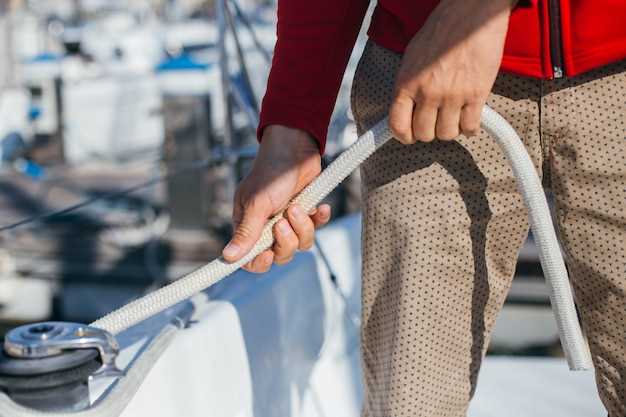
When it comes to archery, the performance of your bow is critical to achieving accuracy and consistency. One of the key components that significantly affects this performance is the bow cable. Over time, bow cables can wear out, fray, or stretch, leading to decreased efficiency and accuracy. Recognizing the signs that indicate a need for replacement is essential for any serious archer.
Bow cables are subjected to significant stress during each shot, resulting in potential damage that can impact the overall function of your equipment. Understanding the subtle symptoms of cable wear can prevent larger issues down the line. Whether you’re an experienced archer or a novice, being vigilant about your bow’s condition is vital for maintaining optimal performance.
In this article, we will explore the common signs that suggest it’s time to replace your bow cables. From inconsistent arrow flight to visible damage, these indicators can help you determine whether your cables are still up to the task or need to be replaced to ensure your archery experience remains enjoyable and successful.
Evaluating Performance Declines in Archery

As an archer, it’s crucial to recognize the subtle signs that indicate a decline in your equipment’s performance. One of the key components that can significantly impact your shooting accuracy and consistency is the bow cable. Regular evaluation of your bow cables can prevent performance issues and enhance your archery experience.
Here are some common indicators that your bow cables may be worn and need replacing:
- Inconsistent Arrow Flight: If you notice erratic arrow trajectories, it may signal that your cables are not functioning properly.
- Loss of Brace Height: Reduced brace height can occur due to cable wear, affecting overall bow performance.
- Increased Vibration: Excessive limb vibration during release can indicate cable deterioration, leading to less accuracy.
- Visible Wear and Fraying: Inspect cables for signs of wear, such as fraying or discoloration, which can compromise their effectiveness.
- Difficulty in Tuning: If you’re having trouble tuning your bow to achieve proper arrow flight, worn cables might be the culprit.
Regular maintenance and replacement of bow cables are essential. Proper care can extend their longevity and keep your performance at its peak. Performing routine checks and addressing any signs of wear promptly ensures that you maintain optimal shooting conditions.
In conclusion, being proactive in evaluating the condition of your bow cables will help you avoid performance declines and enhance your overall archery experience.
Identifying Physical Wear and Tear on Cables
Physical wear and tear on bow cables can significantly affect your bow’s performance. Regular inspection is essential to ensure optimal functioning and to prevent potential failures. Look for signs such as frayed fibers, which may indicate excessive usage or damage. Fraying can occur from rough handling or contact with sharp objects during storage or transport.
Additionally, pay attention to any kinks or twists in the cables. These irregularities can lead to uneven tension and inconsistent arrow flight. A twist in the cables may also signal that they are nearing the end of their lifespan. Over time, exposure to environmental elements like moisture and extreme temperatures can weaken the cables, making them more susceptible to damage.
Another key aspect to monitor is the overall elasticity of the cables. If they feel overly stretched or lose their original shape, it is likely time for replacement. A loss of tension affects not only the bow’s performance but also accuracy and safety.
Lastly, any discoloration or signs of corrosion should not be overlooked. These can indicate deterioration in the cable material, which can compromise performance over time. Regularly examining your bow cables for these physical signs will help ensure reliable performance and extend the life of your equipment.
Understanding Adjustments and Tuning Issues

The performance of your bow is directly related to its tuning and adjustments. As cables experience wear over time, their ability to maintain the correct specifications diminishes. This can lead to various tuning issues that affect arrow flight, accuracy, and overall shooting experience.
One common indication of adjustments needing attention is a shift in anchor point or peep sight alignment. If these components are not in their proper positions, it could signal that the cables have stretched or lost tension, resulting in erratic arrow trajectories.
Additionally, you may start to notice a decrease in performance when drawing the bow. A bow that once felt smooth may begin to feel rough or sluggish, indicating that the cables may require replacement. This not only affects your comfort while shooting but can also hinder your accuracy.
Regularly inspect your bow cables for any visible signs of wear, such as fraying or breaks. If such damage is evident, the ability of the cables to assist in maintaining proper tuning is compromised. Consequently, it’s crucial to prioritize cable replacement for optimal bow performance.
Furthermore, an unsuccessful tune can result in issues such as inconsistent grouping or difficulty in achieving proper arrow flight. Proper tuning ensures that all elements of the bow work in harmony, and worn cables can drastically disrupt this balance. Thus, when considering the integrity of your bow, the state of the cables should be a top priority.



